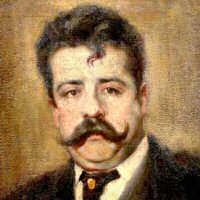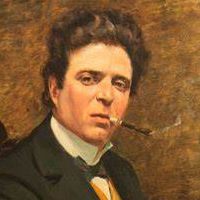| Handout (flat) Handout (folded) Return to Index Synopses |
Verismo, Italian opera at the end of the 19th century, what can it be but real life on the opera stage? Mascagni’s
Cavalleria rusticana, Leoncavallo’s Pagliacci, and a number of operas by Puccini, all have become sure
recipes for box-office success, famous for urging their performers to heights of passion and, in productions like
those of Franco Zeffirelli, filling the stage with Hollywood spectacle and a wealth of period detail.
Yet isn’t the result of realist staging to create just another stage device, where the audience reacts in amazement
at how they got all that on the stage, rather than recognizing the reality of the characters and situations? Isn’t
there are difference between verismo, realism, and the real? We shall sample three directors’ takes on the traditional
Cavalleria-Pagliacci double bill: one strictly in period, another equally realistic but resolutely modern, and
a third that throws such realism away altogether to embrace the deliberate artifice that is the theater. rb.
 |
Ruggiero Leoncavallo, 1858–1919. Italian composer. Although he wrote many operas, Leoncavallo's reputation rests upon a single work, I pagliacci (the players, 1892), a two-act opera generally performed as half of a double bill. But that is one of the cornerstones of Italian verismo—a movement characterized by its depiction of the passions of ordinary people. |
 |
Pietro Mascagni (1863–1945). Italian composer. While still in his twenties, Mascagni won first prize in a 1890 competition sponsored by the music publisher Sanzogno. Cavalleria rusticana (Rustic Chivalry), the winning work, soon achieved worldwide popularity, particularly in combination with another single-act work, Leoncavallo's I pagliacci (1892), which together virtually define the verismo style. None of his other operas has achieved such fame. |


















